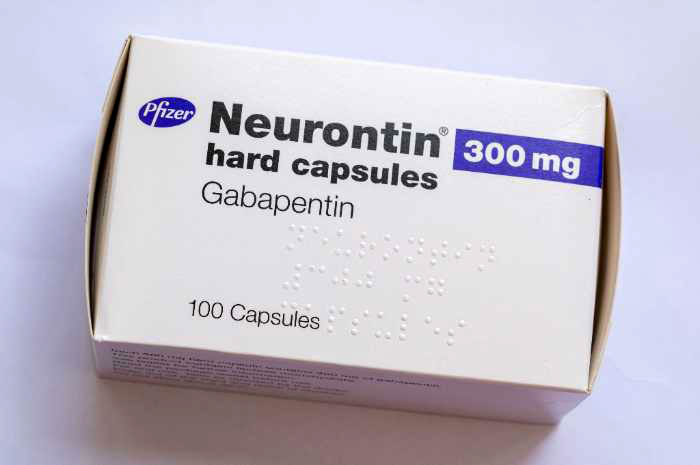
Gabapentin is a medication that is used to treat some types of seizures and persistent pain. It is most effective for neuropathic (nerve) pain, such as burning, shooting, or stabbing pain. Gabapentin belongs to a group of medicines called the Gabapentinoids, these medications are anticonvulsants originally intended to control epileptic seizures.
You may notice that information from the manufacturer may not mention your type of pain. This is because studies have not been conducted specifically for your type of pain, but the medication has shown to be effective for treating various types of pain. Gabapentin works by changing the way that nerves send messages to your brain. If the messages are reduced, then the pain will be reduced.
- What is Gabapentin and what are its uses?
- Isn’t Gabapentin used to treat epilepsy?
- What is the difference between Gabapentin and Pregabalin?
- Can Gabapentin be used to treat other conditions?
- Who should take Gabapentin?
- Who may not be able to take Gabapentin?
- How long does Gabapentin take to work?
- How long should you use Gabapentin for pain relief?
- How to take Gabapentin
- What should I do if I forget a dose?
- What are the side effects of using Gabapentin for pain relief?
- Can I drink alcohol whilst taking Gabapentin?
- Is it safe for me to drive or operate machinery whilst I’m taking Gabapentin?
- Is it safe for me to take other medicines whilst I’m receiving treatment with Gabapentin?
- Is it safe for me to take herbal/ naturopathic medications whilst I am on Gabapentin?
- Gabapentin and pregnancy
- Gabapentin and breastfeeding
- Can I take this medication long term and what do i do if I want to stop taking Gabapentin?
- What withdrawal symptoms can I experience if I abruptly stop Gabapentin?
- What are my treatment options if Gabapentin does not work for my pain?
- Summary
What is Gabapentin and what are its uses?
Gabapentin works by interacting with calcium channels in the brain, changes the way that nerves send messages to your brain. Gabapentin treats pain by decreasing abnormal excitement in the brain.
Gabapentin for pain relief is used to treat various types of pain, including: nerve pain from shingles, nerve pain from diabetes, radiculopathic pain (“sciatica”), fibromyalgia pain, migraines and spinal cord injury pain. Other uses might include treatment of hot flashes, anxiety, insomnia and restless legs syndrome. Gabapentin is available in both capsule and tablet form, and it is typically taken two or three times per day.
Isn’t Gabapentin used to treat epilepsy?
Gabapentin is commonly used to treat epilepsy. Gabapentin works by calming down nerves in the brain, which helps to reduce seizure activity. Gabapentin is thought to work in a similar way to relieve pain as it does to reduce seizures.
Gabapentin doses used to treat epilepsy are often much higher than those used in managing pain. The usual dosage to treat epilepsy is 900mg to 3600mg per day, split into three doses.
What is the difference between Gabapentin and Pregabalin?
Pregabalin is the generic name for the brand name Lyrica. Gabapentin is the generic name for the brand name Neurontin. They belong to the same class of medications, called the gabapentinoids, but they are not the same drug.
Both medications can be used to treat neuropathic (nerve) pain but they are not interchangeable – you should not switch between them without your doctors advice.
Pregabalin (Lyrica) is taken twice daily, whilst Gabapentin is usually taken three times per day.
Pregabalin (Lyrica) is more likely than Gabapentin to cause side effects such as drowsiness, dry mouth, blurred vision, swelling and weight gain. Gabapentin is more likely to cause nausea than Pregabalin. Both medications can cause fatigue, dizziness and memory problems.
There is currently no evidence that shows significant difference in the effectiveness of treating nerve pain between Gapabentin and Pregabalin.
Can Gabapentin be used to treat other conditions?
While gabapentin is most commonly used to treat pain, it may also be used for other purposes depending on the individual case. Some of these other possible uses include treating hot flashes and restless legs syndrome, as well as a number of other disorders related to brain function.
Who should take Gabapentin?
Gabapentin has many uses, but it is used most effectively to treat neuropathic pain, including:
- Radiculopathic pain (“Sciatica”)
- Persistent post surgical back pain
- Diabetic neuropathy
- Shingles pain
- Neuropathic pain in other parts of the body, such as infrapatellar neuralgia post knee surgery
- Central sensitisation
- Fibromyalgia
- Migraines
- Occipital neuralgia
Who may not be able to take Gabapentin?
Gabapentin might not be suitable for some patients.
Your doctor should be informed if you:
- Have ever had an allergic reaction to gabapentin or any other medication
- Have ever misused or been addicted to any medication/ substance
- Are trying to get pregnant or are already pregnant
- Are on a controlled sodium or potassium diet, or have impaired kidney function
How long does Gabapentin take to work?
The exact time it takes for gabapentin to work will depend on the individual and the condition being treated. Generally, gabapentin may take a few days to several weeks to provide relief from pain, depending on factors such as dose, frequency of administration, and other variables that affect individual response. In order to maximize its effectiveness, it is important to take gabapentin as directed by your doctor or pharmacist, and to follow any other instructions provided by your healthcare provider.
You should also talk to your healthcare provider if you experience any side effects while taking gabapentin, as this may help optimize the dosage and timing of medication administration. Additionally, it is important to be patient, as finding the right treatment regimen may take some time.
How long should you use Gabapentin for pain relief?
The length of time that you should use Gabapentin for pain relief will depend on the specific type and severity of your condition. Your doctor will provide instructions on how long to continue taking gabapentin, as well as any possible side effects or risks that may be associated with longer-term use.
In general, it is recommended that gabapentin be used for as long as it is needed to manage your pain, and you should follow the instructions of your healthcare provider closely. If you experience any side effects or other adverse effects while taking gabapentin, consult your doctor right away and do not continue taking the medication unless instructed to do so.
How to take Gabapentin
Gabapentin capsules should be taken whole and should not be crushed, chewed or broken open. They can be taken with or without food but should be taken in equal doses at regular intervals. For example, if you are taking three 300mg capsules daily, these should be taken at 8-hourly intervals (i.e. 7am, 3pm and 11pm).
The usual dosage to treat nerve pain in adults is 900mg per day, split into three doses. For patients with medication sensitivities or if there is a concern about side-effects, Gabapentin might be started at much lower doses, such as 100mg twice daily and slowly increased over weeks to reach the intended target dose.
If you have kidney problems your doctor may start you on a lower dose and increase this gradually over a number of days as tolerated by you. You should take gabapentin exactly as directed by your doctor or pharmacist.
What should I do if I forget a dose?
If you forget to take a dose of Gabapentin, you should take the missed dose as soon as you remember unless it is close to the time of your next dose. In this case, you should skip the missed dose and continue with your regular Gabapentin schedule. It is important not to take more than the prescribed Gabapentin dose per 24 hours as this could lead to serious Gabapentin side effects.
What are the side effects of using Gabapentin for pain relief?
The most common side effects associated with gabapentin include dizziness, somnolence (sleepiness), ataxia (unsteadiness) and peripheral oedema (swelling due to fluid retention). These effects are more common when treatment is first initiated or the dose is increased and generally improve with continued treatment as your body gets used to the medicine.
Rarely, more serious side effects may occur including hypersensitivity reactions characterised by skin rashes, hives and blisters; problems with coordination; impaired thinking; hostility; exaggerated sense of well-being; amnesia; depression; hallucination; severe allergic reactions including anaphylaxis and angioedema; slowed or troubled breathing; unusual eye movements and confusion.
As with all medicines, some people taking gabapentin may experience side effects regardless of how well the medicine works for their condition.
Can I drink alcohol whilst taking Gabapentin?
It is generally considered safe to drink alcohol while taking gabapentin; however, there are a few potential risks to be aware of. Drinking alcohol may increase the sedative effects of gabapentin, leading to increased drowsiness and fatigue. Additionally, drinking alcohol may worsen some of the other side effects of gabapentin, such as dizziness, nausea, and vomiting.
Therefore, it is generally advisable to avoid drinking alcohol if you are taking gabapentin. If you do choose to drink while taking gabapentin, be sure to do so in moderation and consult with your doctor if you experience any troubling side effects.
Is it safe for me to drive or operate machinery whilst I’m taking Gabapentin?
If you experience drowsiness after taking gabapentin, we advise that you should not drive or operate complex machinery until the effects have worn off. It is important to be cautious when taking any medication that may cause drowsiness, as it can be dangerous to operate machinery or drive if you are not fully alert.
Is it safe for me to take other medicines whilst I’m receiving treatment with Gabapentin?
It is important to note that gabapentin may interact with other medications, including over-the-counter medications and supplements. For example, taking gabapentin with antacids may reduce the effectiveness of the gabapentin. To avoid this interaction, it is recommended that you take antacids two hours before or after taking gabapentin.
Gabapentin can be dangerous if taken in combination with other sedative drugs such as opioids (morphine, oxycodone, hydromorphone), benzodiazepines or sleeping tablets such as zopiclone. Taking gabapentin in combination with sedative drugs, increases your risk for severe side-effects such as sleepiness, respiratory depression, coma, and even death.
If you are unsure about whether or not a medication will interact with gabapentin, be sure to speak to your doctor or pharmacist before taking it.
Is it safe for me to take herbal/ naturopathic medications whilst I am on Gabapentin?
Whilst most naturopathic/ herbal medications are safe to use with Gabapentin, it is best to confirm with your doctor when starting a new medication. Any medications that cause side-effects such as drowsiness or dizziness could be unsafe when used concurrently with Gabapentin, even naturopathic/ herbal medications.
Gabapentin and pregnancy
Gabapentin is not generally recommended in pregnancy as there is not enough information available on whether it is safe.
Gabapentin and breastfeeding
Gabapentin passes into breast milk in small amounts. It has not been known to cause any serious side-effects in breastfed babies.
If your doctor approves you taking Gabapentin whilst breastfeeding and your baby is not feeding as well as usual, seems drowsy, or has any other concerning symptoms, talk to your doctor, pharmacist or midwife.
Can I take this medication long term and what do I do if I want to stop taking Gabapentin?
It is generally recommended that gabapentin be used for as long as needed to manage pain, and you should talk to your doctor about the risks and benefits of taking it long term. Gabapentin should be reduced or stopped with the advice of your general practitioner or pain specialist, gradually reducing your medication over a period of time. If you stop Gabapentin suddenly, you might experience withdrawal symptoms.
What withdrawal symptoms can I experience if I abruptly stop Gabapentin?
- Anxiety
- Restlessness
- Irritability
- Heart palpitations
- Sweating
- If used for treating seizures, returning or worsening seizures
What are my treatment options if Gabapentin does not work for my pain?
Multimodal therapy should be used to treat neuropathic (nerve) pain. Gabapentin is likely only one of the options used to try and improve your pain.
Other therapies that can improve nerve pain include:
- Physical therapy
- Psychological therapy
- Occupational therapy
Other medications/ treatments that can improve nerve pain include:
- Other anti-epileptic medications such as Carbamazepine or Topiramate.
- Anti-depressants such as tricyclic-antidepressants (amitriptyline or nortriptyline) or SNRI’s (Duloxetine)
- Topical treatments – patches, creams or ointments, such as Lignocaine patches.
- Infusions such as Ketamine/ Lignocaine infusions.
- Selected nerve blocks, pulsed radiofrequency and radiofrequency ablations and other advanced pain interventions.
Summary
Gabapentin is a medication that is used to treat some types of persistent pain, most effectively nerve pain such as burning, shooting, or stabbing pain. It belongs to a group of medicines called anticonvulsants, which are also used to treat epilepsy.
The most common side effects associated with gabapentin include dizziness, somnolence (sleepiness), ataxia (unsteadiness) and peripheral oedema (swelling due to fluid retention). These effects are more common when treatment is first initiated or the dose is increased and generally improve with continued treatment as your body gets used to the medicine.
Disclosure: The information in this article is not intended to replace your doctor’s medical advice, diagnosis or treatment. If you require more information, or have any questions, please speak to your doctor/ specialist.
References
- https://medlineplus.gov/druginfo/meds/a694007.html
- https://www.healthdirect.gov.au/medicines/brand/amt,112611000036104/gabapentin-aspen
- Wiffen PJ, Derry S, Bell RF, Rice ASC, Tölle T, Phillips T, Moore R. Gabapentin for chronic neuropathic pain in adults. Cochrane Database of Systematic Reviews 2017, Issue 6. Art. No.: CD007938. DOI: 10.1002/14651858.CD007938.pub4
- Robertson K, Marshman LAG, Plummer D, Downs E. Effect of Gabapentin vs Pregabalin on Pain Intensity in Adults With Chronic Sciatica: A Randomized Clinical Trial. JAMA Neurol. 2019 Jan 1;76(1):28-34. doi: 10.1001/jamaneurol.2018.3077. Erratum in: JAMA Neurol. 2019 Jan 1;76(1):117. PMID: 30326006; PMCID: PMC6439871.
Dr. Ilonka Meyer is the Clinical Director and Founder of MindBodyPainSpecialists. She also holds an appointment as Acting Director of the Pain Service and Pain Specialist at the Austin Hospital in Heidelberg, Melbourne. Ilonka has a strong interest in interventional pain treatments, peri-operative pain and medication optimisation and cancer pain.
Ilonka is skilled in Clinical Research, Medical Education, Coaching, and Healthcare Management. Her main research focus lies in interventional pain medicine in the peri-operative population, cancer pain and the health economic benefits of pain and medication optimisation in patients both pre-and postoperatively.











